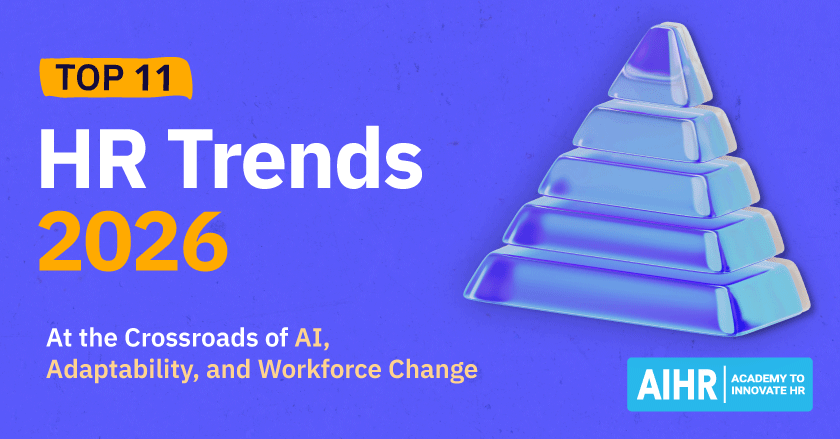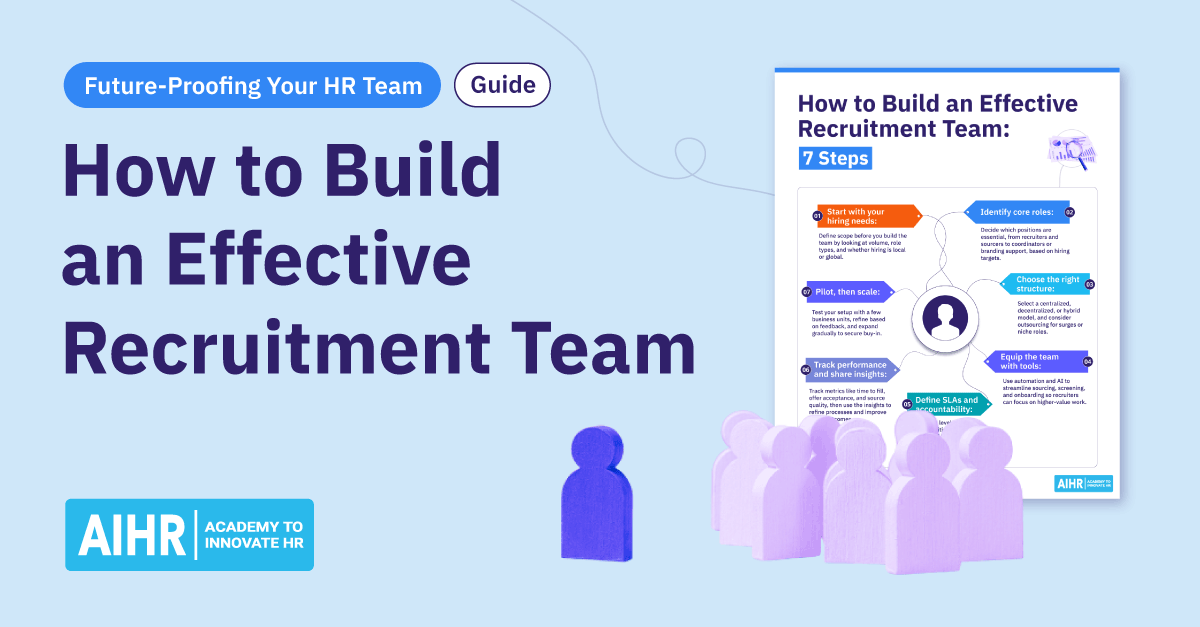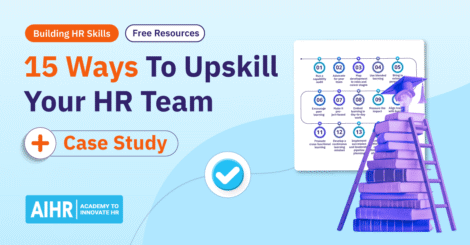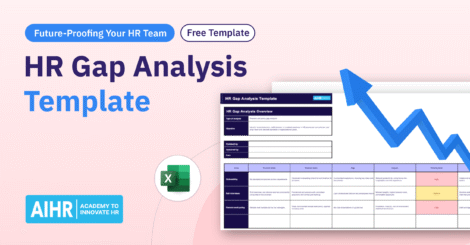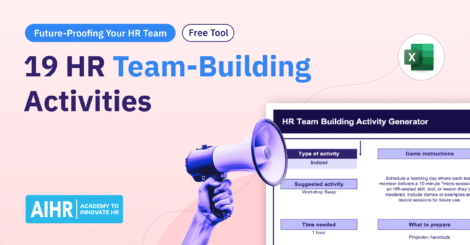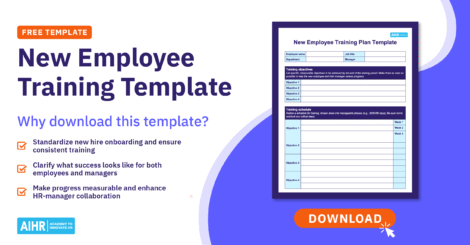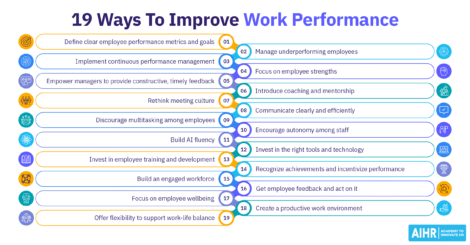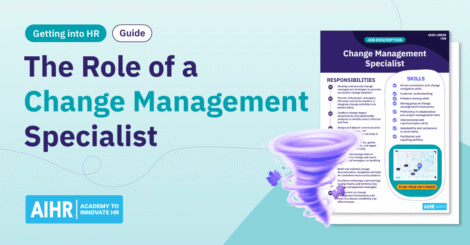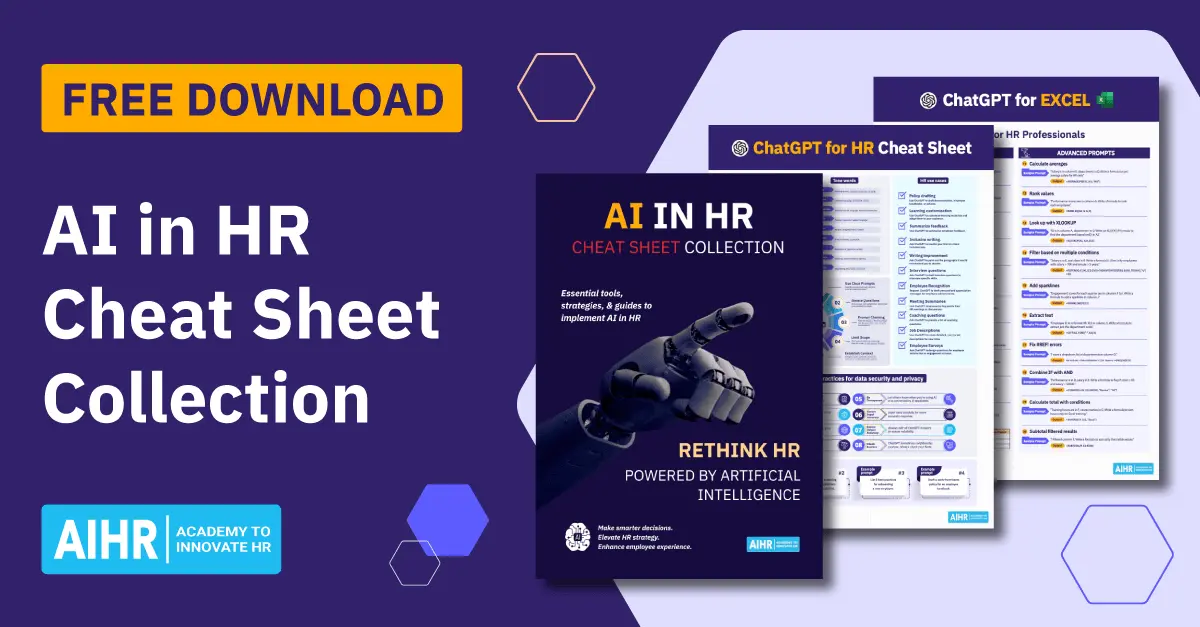30% of business leaders say hiring issues have damaged their brand and made it harder to attract top talent. A dedicated in-house recruitment team can improve speed, quality, and candidate experience.
This article covers what a recruitment team is, how to right-size and structure it, the key roles and day-to-day work, and practical steps to build one. We’ll also look at Recruitment Process Outsourcing and when it’s worth considering. Let’s dive in.
Contents
What is a recruitment team?
What does a recruitment team do?
Recruitment team structure
What is the right size for your recruitment team?
How to build an effective recruitment team
FAQ
What is a recruitment team?
A recruitment team is a group of specialists focused on sourcing, attracting, assessing, and hiring candidates. The goal is to bring in the right people to meet business goals, while making hiring smoother and giving candidates a better experience.
In small companies, an HR Generalist often handles recruiting. As the company grows, hiring becomes too time-consuming and specialized to manage alongside other HR work, which is when a dedicated team makes sense.
What does a recruitment team do?
Here are the core activities a recruitment team typically owns:
- Understand hiring needs: Partner with business leaders and HR to plan workforce needs, run job analysis, and translate that into clear job descriptions with the skills and experience required for each role.
- Attract candidates: Promote the company as an employer of choice by writing and posting job ads, running employer branding campaigns, and engaging potential applicants through social media, job boards, and career fairs.
- Source talent: Candidate sourcing is another key activity of the recruitment team. It involves building and maintaining relationships with (passive) talent to create a robust pipeline of candidates to fill both current and future vacancies.
- Assess and select: Design and manage the selection process, from screening to interviews and assessments, working closely with the Hiring Manager at every step.
- Manage the candidate experience: An ERE report found that only 25% of applicants in North America reported a great experience. Because experience influences offer acceptance and referrals, the team manages touchpoints and looks for ways to improve them.
- Support Hiring Managers: Work side by side with Hiring Managers to align on requirements, communicate openly, share updates promptly, and provide guidance throughout the process.
- Handle offers and onboarding handoffs: The Hiring manager or the recruitment team may extend offers. Using an offer letter template helps keep details consistent and accurate. After acceptance, the team leads preboarding and hands the new hire over to onboarding with a clear, well-timed transition.
- Track metrics and improve: Monitor a focused set of recruiting metrics to guide decisions and spot opportunities to refine the process. Common metrics include time to hire, quality of hire, sourcing channel effectiveness, first-year attrition, and candidate experience.
HR tip
A strong employer brand can cut cost per hire by up to 50% and reduce turnover by 28%. Tighten your EVP, refresh your careers page, and spotlight employee stories to lift conversion and lower spend.
Recruitment team structure
There are several ways to structure a recruitment team. The best setup depends on company size, hiring volume, role complexity, locations, and how automated your tools and workflows are. Below you’ll find the core roles and what they own, followed by the most common operating models.
Head of Talent Acquisition
The strategic lead for the recruitment function. They set direction and connect hiring outcomes to business goals.
- Define long-term hiring strategy, workforce planning, budgets, KPIs, and SLAs
- Partner with executives, HR leadership, HRBPs, and Finance so plans align with priorities and capacity
- Own the operating model, tech stack, and vendor choices
- Report progress, risks, and trade-offs to senior leadership.
Recruitment Manager
With at least two or three years of people management experience and a strong track record, Recruitment Managers handle more complex delivery and team leadership. Other typical tasks include:
- Mentoring junior recruiters and sourcers
- Contributing to employer branding and channel strategy
- Managing a team and resolving escalations
- Optimizing the recruitment process and driving consistency.
Talent Acquisition Specialists / Recruiters
A Talent Acquisition Specialist —often called a Recruiter—manages the full recruitment cycle. This covers everything from preparing job descriptions and sourcing candidates to recommending people, arranging interviews, and advising the Hiring Manager.
- Run structured role intake and finalize success profiles
- Write and post job ads tailored to target talent segments
- Source, screen, interview, and coordinate assessments
- Advise Hiring Managers on market data, compensation ranges, and selection decisions.
Sourcers / Candidate Researchers
A Talent Sourcer manages the early phase of the funnel, identifying and engaging suitable candidates. They:
- Develop and execute sourcing strategies across multiple channels
- Reach out to potential candidates and nurture passive talent
- Build and maintain the organization’s talent pool
- Follow up on referrals and track sourced-to-hire conversion.
Recruitment Coordinator
The Recruiting Coordinator keeps activities running smoothly so the team can source, screen, and hire efficiently. They, for instance:
- Communicate with candidates and manage scheduling
- Provide administrative support and keep ATS data accurate
- Make sure hiring procedures comply with legal requirements and company policies.
Build recruitment strategies that scale with your business
A strong recruitment team does more than fill roles—it strengthens your employer brand, improves candidate experience, and gives hiring managers the support they need. To get there, HR needs to master modern talent acquisition strategies that align with business priorities.
With AIHR’s Strategic Talent Acquisition Certificate Program, you will:
✅ Design and implement a recruitment strategy that delivers measurable impact
✅ Master sourcing, selection, and employer branding to attract top talent
✅ Build and manage recruitment teams that are structured for efficiency and scalability
✅ Apply data-driven talent acquisition practices to improve quality of hire and time to fill
🎓 Transform recruitment from a reactive process into a strategic advantage for your organization.
Employer Branding Specialist
Employer Branding Specialists develop the organization’s image as an employer, aligned with core values, and communicate it to (future) candidates. Other tasks include:
- Developing the EB strategy and messaging pillars
- Crafting employer brand content for the careers site and social channels
- Involving employees in advocacy and storytelling
- Tracking the EB’s performance using employer branding metrics.
Recruitment Marketing Specialist
A Recruitment Marketing Specialist is responsible for developing and implementing an organization’s recruitment marketing strategies to attract, engage, and hire talent. They also:
- Build the employer brand or partner closely with EB Specialists
- Decide which channels to use (job boards, programmatic, CRM, social) and how
- Stay current on marketing and advertising trends in staffing
- Monitor and measure campaign effectiveness and optimize based on results.
Campus Recruiter
A Campus Recruiter drives the organization’s efforts to recruit students directly from colleges and universities for full-time positions, graduate programs, or internships. Typical tasks around campus recruitment are:
- Attending career fairs, information sessions, and campus events
- Building relationships with students and university career centers
- Developing and implementing campus hiring strategies
- Acting as a brand ambassador for the company on campus.
With the roles in mind, organizations typically use one of these operating models.
Recruitment outsourcing: When to consider it
Recruitment Process Outsourcing (RPO) refers to an organizational strategy in which companies decide to transfer all or just a part of their recruitment process to a third party. The goal is to make the attraction, screening, selection, and ultimately the hiring of candidates more cost-effective and efficient.
What route a company decides to take will depend on its unique circumstances; some will choose to hire separate agencies to manage their entire recruitment process, while other firms may outsource only certain aspects, such as sourcing or screening applicants.
Common scenarios in which companies turn to RPO include:
- High-volume hiring
- Niche roles
- Complex and competitive hiring markets
- Seasonal spikes
- Global expansion.
- Provides access to hiring expertise and tech
- Saves time and effort
- Cost-effective
- Easy to scale when needed
- Your candidate experience may suffer
- Potential culture mismatch between new RPO hires and your organization
- Confidentiality and (data) security risks
- High initial cost
In-house recruitment team
- Better candidate experience
- Better cultural alignment with new hires
- Stronger employer branding
- More control over the process and more options for customization
- Building and maintaining a talent pool
- High operational costs
- Risk of tunnel vision on the talent market
- Scalability challenges
- Lack of specialized knowledge
While RPO has emerged as a rapidly growing strategy for talent acquisition challenges over the past decade, outsourcing usually doesn’t replace the need for an in-house recruitment team. In most organizations, outsourcing supports the in-house function.
What is the right size for your recruitment team?
The ideal size of your recruitment team and the exact mix of roles you need depend on a range of factors. These include:
- Hiring volume and goals: The number of hires you expect to make annually is the biggest driver of team size. For example, if you expect a steady flow of 50 to 80 hires a year, a lean team with one to two Recruiters may work. If you are scaling quickly and need 300 or more hires across multiple functions, you will need a larger team with specialized Recruiters.
- Complexity of roles and scarcity of the target group: Specialized or technical roles may require more in-depth sourcing and more experienced Recruiters, which increases team size. If you have a wider pool of potential candidates, it is generally easier and faster to identify, attract, and select them.
- Budget and resources: The funding and resources available for hiring and staffing directly affect how large the team can be.
- Company size, structure, and industry: An SME will not need a team as large as a multinational corporation (MNC) will. A medium-sized company in a low-turnover industry, such as retail or hospitality, will likely need fewer Recruiters than a similar company in a high-turnover industry.
- Technology and support: Team size and makeup depend on how much of the process is automated. Tools in areas like sourcing, screening, and scheduling can free up time for the team.
- Outsourcing: If parts of the process are handled by an external partner (for example, through RPO), the size of the in-house team will be affected based on capacity, skills, and the scope you outsource.
While there is no one-size-fits-all ratio for the number of hires per Recruiter, the table below gives an idea of what is typical.
Small businesses and start-ups (0-50 employees)
4 to 10
1
Often, the company founder does the recruitment.
Mid-sized companies (50-250 employees)
25 or more
1 recruiter for every 25 hires (on average).
- Recruitment manager %3
- Recruiter/Talent Acquisition Specialist
Large companies (250 or more employees)
30 to 40 for standard roles, 100+ for high volume positions
1 recruiter for every 25 hires (on average).
- Recruitment manager
- Talent Acquisition Specialist
- Recruitment coordinator
- Sourcer
Enterprise-sized companies (1000+ employees)
Between 100 and 250
Between 4 and 10 people.
- Head of Talent Acquisition
- Recruitment manager
- TA Specialist
- Sourcer
- Employer Branding Specialist
- Recruitment marketing specialist
* Please note that the definition of a small, medium, or large company may differ by country or region.
How to build an effective recruitment team
Let’s look at how you can build an effective recruitment team. Here are several steps to consider and to provide you with some guidance:
1. Start with your hiring needs
Before building the team, review the scope and scale of recruitment in your organization:
- How many roles are typically open at once?
- Are you hiring generalists, specialists, or a mix of both?
- Is your hiring mostly local, global, or remote?
- What service levels do business leaders expect?
Answering these questions will help you determine the team’s size, specialization, and budget.
2. Identify core roles
Once you have a clear picture of hiring needs, identify the core roles for your recruitment team. Depending on expected annual hires, this may include Recruiters, sourcers, a Recruiting Coordinator, and support for employer branding and recruitment marketing. Use the role lineup in the previous section as your reference.
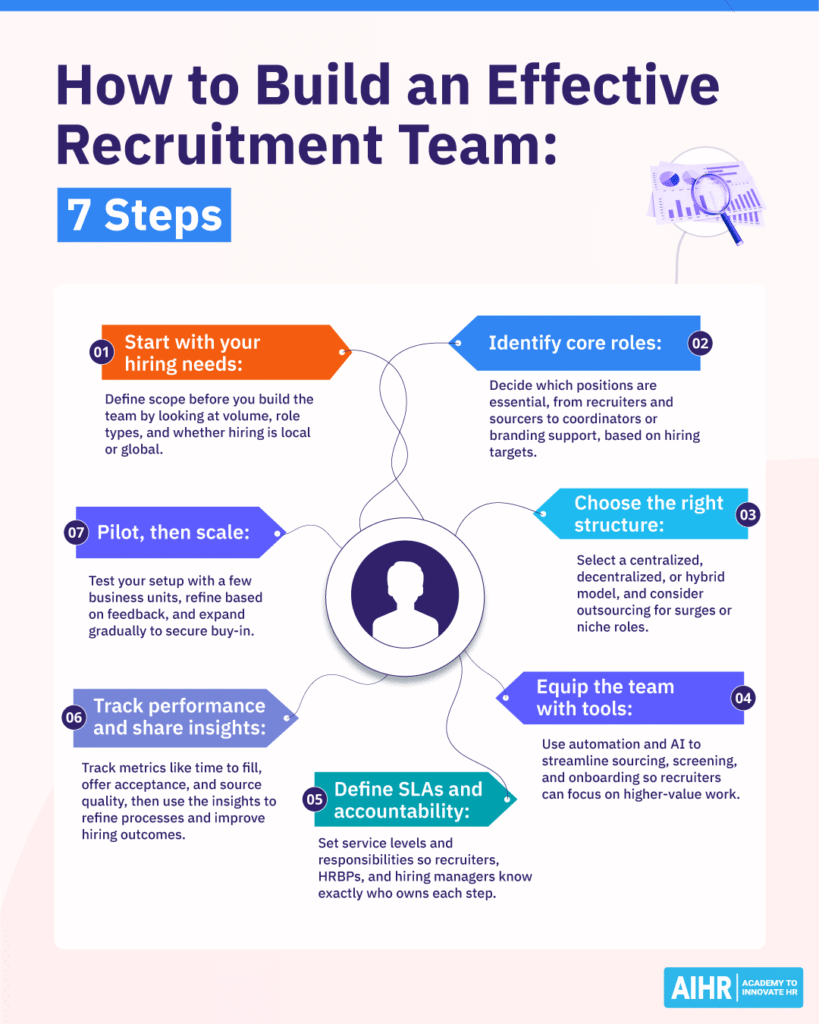
3. Choose the right structure
With role needs and hiring markets defined, decide how to structure the team. As discussed earlier, common models are centralized, decentralized, and hybrid. Some organizations also combine these with outsourcing for specific activities or surge periods.
4. Equip the team with tools
AI and automation now support every stage of the recruiting life cycle, from sourcing and attraction to screening, interviewing, and onboarding. When your team is in place and refining the selection process, ensure there is a budget for tools that align with your broader HR strategy and data standards.
HR tip
About 70% of TA professionals who are integrating or testing generative AI say it improves hiring efficiency. Start small with clear use cases like drafting job ads, summarizing interview notes, or prioritizing outreach lists, then track impact on speed and quality.
5. Define SLAs (service level agreements) and accountability
Who owns what in the hiring process? Without clear expectations, bottlenecks are inevitable.
- Create service levels for critical steps such as shortlist delivery, interview feedback, and offer approvals.
- Pair SLAs with a RACI chart so everyone knows their role—Recruiters, HRBPs, and Hiring Managers included.
This ensures accountability and makes it easier to spot where the process breaks down.
6. Track performance and share insights
Data should guide decisions, not sit in a spreadsheet. Focus on a small set of metrics:
- Time to fill and time to start
- Offer acceptance rate
- Source effectiveness and cost
- First-year attrition
- Candidate and hiring manager satisfaction.
Visualize these in a simple dashboard. Share results regularly with business leaders, and turn insights into actions, not just reports.
7. Pilot, then scale
Rolling out a new TA model across the company at once is risky. Start with one or two business units. Gather feedback from Recruiters, Hiring Managers, and candidates, then refine.
Once the kinks are worked out, expand gradually. A phased approach builds confidence and makes it easier to secure buy-in from skeptical leaders.
On a final note
A dedicated recruitment team can be instrumental in taking your talent acquisition to the next level. It can streamline your hiring process, boost your employer brand, and improve your candidate experience.
The ideal size and configuration of a recruitment team depend on your organization’s unique circumstances, including the scarcity (or abundance) of candidates, the number of vacancies, and the extent to which your process has already been automated or outsourced.
FAQ
A recruitment team is a group of professionals specialized in attracting, sourcing, selecting, and hiring talent.
Recruitment is one of the key HR functions. As such, it is a part of what HR does, but it is not the only function of HR. Since recruitment is a vast field that often requires specific knowledge and skills, many organizations have a dedicated recruitment team within their HR department.


